#How many world heritage sites are there at present
Text
यूनेस्को की विश्व धरोहर में शामिल भारतीय धरोहर की सूची
यूनेस्को की विश्व धरोहर में शामिल भारतीय धरोहर
पूरी दुनिया में एक से बढ़कर एक हैरतअंगेज स्थल है जिनमे से कुछ को यूनेस्को द्वारा अपने विश्व विरासत स्थल में शामिल किया हैं। भारत मे भी यूनेस्को ने ऐसे बहुत से जगहों को अंकित किया है। तो आज हम इस आर्टिकल में जानेंगे यूनेस्को की चिन्हित उन्ही विश्व धरोहर स्थलों के बारे में। तो चलिए देखते है यूनेस्को की विश्व विरासत में शामिल भारतीय धरोहर की सूची और…

View On WordPress
#How many UNESCO heritage sites are there in India#How many UNESCO sites are there in India#How many world heritage sites are there at present#UNESCO World Heritage List#unesco world heritage sites in india#Which is the first UNESCO World Heritage City of India#Which is the UNESCO World Heritage Site#Which state has the maximum number of UNESCO World Heritage Sites in India#भारत की बात#यूनेस्को की विश्व धरोहर#यूनेस्को में शामिल बायोस्फीयर रिजर्व#यूनेस्को विश्व धरोहर स्थल में शामिल भारतीय विरासत स्थल
0 notes
Photo

History & Mining Culture of the Ore Mountains
The Ore Mountains (Erzgebirge) on the border between Germany and the Czech Republic is a region rich in history and culture connected to the mining industry. For centuries the cities on both sides of the mountain range had sustained themselves and flourished by the extraction of tin, copper, zinc, uranium, and most importantly silver. Even though the mines are now closed the mining culture and heritage is still widely celebrated and visible for visitors, with the hammer and chisel motif on many buildings in the different mining towns.
The rich mining heritage of the region was recently inscribed on the UNESCO world heritage list (July 2019 CE), with sites on both sides of the border. On the German side, in the Free State of Saxony, the cities of Freiberg and Annaberg-Buchholz has much to offer in educating visitors about the mining industry, both from the Middle Ages and more recent times and how this intensive industry shaped the lives and culture of the people living there. A visit is definitely recommended for anyone interested in mining history, early industrialization or for those who seek to experience an authentic German Christmas market.
Freiberg
Freiberg, a one-hour train ride from Dresden, traces its history back to 1168 CE. At that time the forest region was under the control of the Margrave of Meissen. A silver ore was discovered close to the small settlement Christiandorf and lead to the establishment of the city of Freiberg, which got its name from the mining rights belonging to the “free miner”. The mining industry became a very important source of income for the Margrave of Meissen, Otto II (r. c. 1156-1190 CE), known later as Otto the Rich. A large statue of the town's 'founder' can now be seen at the main square of the historic city center. Freiberg's importance and wealth increased rapidly after the discovery of silver, and it remained the economic center and mint of Saxony until the 16th century CE. The mining industry continued in the Freiberg region for 800 years until the mines were finally closed in 1968 CE.
Today Freiberg is a lively and charming city with many exciting sites to see, amongst other the Town Hall from the 15th century CE, and the Cathedral of St. Mary, first contracted in 1180 CE as a Romanesque basilica, the current building dates to c. 1500 CE. On the south side of the cathedral, you can visit a part of the old church, The Golden Gate, a richly ornamented sandstone portal from 1230 CE.
Even though the town was destroyed by fire several times and suffered during the Thirty Years' War (1618-1648 CE), much of the medieval town is still standing. Walking around in the historic center, one architectural feature is especially remarkable: the Gothic patrician houses with very high and steep pitched roof constructions. The main square, Obermakt, is definitely worth a visit, where you will see both the statue of Otto the Rich and the beautiful Town Hall. On the north side of the square, you can also marvel at a gate with intricate carvings depicturing the miners hard at work.
It is impossible to visit this city without being drawn towards the rich mining history and culture. To learn more, visitors are recommended to spend a couple of hours in the Freiberg City and Mining Museum. Located in a stunning late Gothic building, it is one of Saxony's oldest museums, established in 1861 CE. The museum is filled with tools, art, photographs, and other objects connected to work in the mines throughout the ages or the culture that flourished thanks to the mining industry. In addition, no one should leave without a visit to the Freudenstein Castle, where the mineral exhibition Terra Mineralia is on display with over 3,500 minerals, precious stones, and meteorites. The exhibition is presented by the Technical University Bergakademie Freiberg, the oldest university of mining and metallurgy in the world, and is a real treasure trove filled with gems from all over the world.
Continue reading...
33 notes
·
View notes
Text

A major interest in that work [...] was the era of post-war decolonization, and how archaeology connected with it (or not). As the territory of what became the Arab Republic of Egypt emerged from various forms of British rule and Egyptian monarchy, I wanted to know how that process impacted upon archaeology, a field that had been dominated by Euro-Americans (and whose major official institution, the Egyptian Antiquities Service, had been run entirely by French men). [...] The book revolves around, but is not limited to, a major event in the development of what became World Heritage, at least in UNESCO’s -- and, put bluntly, many other people’s -- telling.
UNESCO promotes its International Campaign to Save the Monuments of Nubia, which took place in the adjoining regions of Egyptian and Sudanese Nubia from 1960 until 1980, as central to the development of the 1972 World Heritage Convention. The campaign -- to a large, but not total, extent staffed by teams from the Euro-American institutions who had long excavated in Egypt -- sought to preserve and record ancient temples and archaeological sites in Nubia. Those sites were due to be flooded by the construction of the Aswan High Dam, which, despite having been planned many years earlier, became a centerpiece of Nasser-era modernization plans. Among them the temples at Abu Simbel and Philae, the monuments on the Egyptian -- but not Sudanese -- side of the Nubian border were listed as part of the second tranche of World Heritage sites in 1979, and today Nubian temples are located around the world: “gifts-in-return” for financial contributions to UNESCO’s project, perhaps most famous among them the temple of Dendur at the Metropolitan Museum of Art in New York. The World Heritage Convention, meanwhile, remains the major international piece of legislation in the heritage arena, and at the time of writing has been ratified by 194 States Parties. Oddly, however, beyond an official history published in the 1980s, there has never been a book-length, critical treatment of the Nubian campaign, nor have the articles and book chapters written about the event really addressed it in terms of the “local” (which is to say Egyptian and Sudanese) perspective, let alone the Nubian one.
Flooded Pasts discusses how, in combination with the politics of irrigation and development, UNESCO’s Nubian campaign built on and transformed colonial-era archaeological understandings of Nubia as a region of picturesque ruination: a place filled with ancient, Nile-side ruins, and not a place where people -- Nubians -- lived.
---
During the early decades of the twentieth century (and before and after the British declaration of nominal Egyptian independence in 1922), the building and heightening of the original Aswan Dam had, to increasingly destructive levels, flooded Nubian settlements on the Egyptian side of the Nubian border. These settlements were located alongside the many ancient ruins located in the region, which were also increasingly submerged. Eventually receiving some compensation from the Egyptian government, Nubia’s population were forced to move their homes higher up the Nile’s banks, and many Nubians moved to Cairo and Alexandria to work in domestic service. Meanwhile, Egypt’s antiquities service launched two archaeological surveys directed by colonial officials that sought to record ancient sites before they were flooded.
This process, I argue, made it much easier to separate an ancient Nubian past from the region’s present: one dominated by a territorially novel kingdom of Egypt whose permanence was extrapolated backwards in time.
---
Accordingly, as Egypt and Sudan signed the Nile Waters Agreement of 1959 and confirmed the impending construction of the High Dam, that process precipitated a continuation of earlier archaeological work [...]. Simultaneously, separate “ethnological” surveys either side of the newly hardened Egyptian-Sudanese border prepared for the relocation of the now-separated Nubian population to new, government-planned settlements elsewhere (the Egyptian survey was supported by the Ford Foundation and based at the American University in Cairo; the Sudanese one was supported by the Sudan Antiquities Service).
Even in the face of Nubian demonstrations -- particularly strong in Wadi Halfa in the very north of Sudan -- this forced, state-backed process of migration made the job of archaeological survey easier, constituting further representations of the desolate desert dotted by ancient monuments that earlier work had made possible.
That those monuments -- and that “desert” -- clearly had a far more complex history was a fact elided by most involved.
To a great extent, too, that elision continues, even as the Nubian diaspora has in recent years become much more vocal about its plight. [...]
---
[T]here is no doubt that the Nubian campaign, and the Nubian archaeological surveys before it, affected tens of thousands of lives for the worse. [...] I would hope that Flooded Pasts enjoys a readership beyond the academic, not least because issues around heritage -- what it is, who has a say in it, how its governance operates -- have become so salient in the last few years [...]. There has been a growing amount of work on the histories of archaeology and heritage -- and a corresponding amount of discussion around what it might mean to decolonize those fields [...]. More pressingly, then, I hope that the book catalyzes discussion around the lives of contemporary Nubians [...].
---
All text above are the words of William Carruthers. As interviewed by staff at the Jadaliyya e-zine. Transcript titled “William Carruthers, Flooded Pasts: UNESCO, Nubia, and the Recolonization of Archaeology (New Texts Out Now).” Published online at Jadaliyya. 22 December 2022. [Image from the cover of the book. Bold emphasis and some paragraph breaks/contractions added by me.]
#orientalism#deserts are not empty#this is exactly what ann laura stoler talks about in Imperial Debris#about especially victorian and early 20th century scientists and historians having#socalled imperial nostalgia for ruins and ruination#ecology#abolition#imperial#colonial
100 notes
·
View notes
Text
Sator Arepo
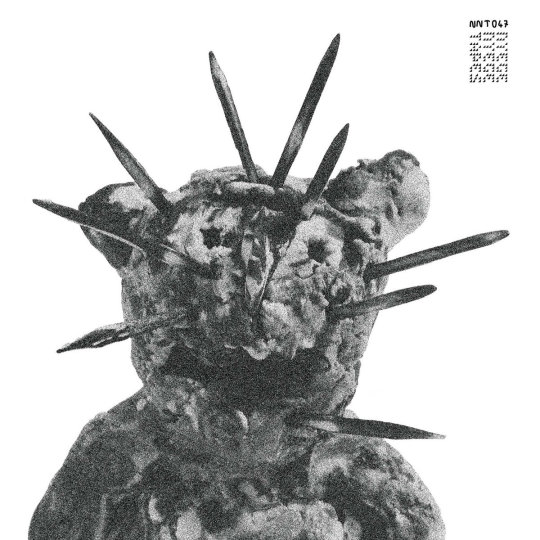
The Sator Arepo, or Sator Square, is an ancient word puzzle comprising five palindromes that's etched on various historical sites throughout the Western world. Its origins are unknown, but the square has long been thought to hold magical properties, used as a charm against illness and evil, to cure insanity or to determine whether someone was guilty of witchcraft. Self-styled "punk ethnomusicologist", acoustician and musician Julien Hairon uses this mystical symbol as the starting point for his debut Judgitzu album in an attempt to reconnect with his Celtic heritage, exploring how its hallowed messages might harmonize with contemporary Tanzanian dance music.
Hairon has been traveling across the world for over a decade, collecting field recordings from countries such as Indonesia, Australia, Cambodia, China and Bangladesh, and presenting them on his Les Cartes Postales Sonores label, re-issuing any curious cassettes and CDs he came across on the PetPets' TAPES imprint. It was during this time that he became fascinated by rituals that involved spirits, prompting him to examine his own ancestry when he returned to Brittany. "Many artifacts in the landscape remain," Hairon explains, "and the power of spirits is still palpable." He represents this Celtic mysticism on 'Sator Arepo' with murky drones and magickal synth tones, using xenharmonic scales (tuning outside of standard 12-tone equal temperament) that reach back to the ancient world. These sounds are augmented with fast-paced, sci-fi rhythms informed by his time in Tanzania; "Singeli has contaminated me," admits the producer.
The most astonishing example of this is 'Miracle', a thrusting soundsystem experiment that layers serpentine, bagpipe-esque electronic wails over extravagant clusters of blocky percussion. Driven by the frenetic 175BPM pulse that echoes through the streets of Dar Es Salaam - popularized globally by forward-thinking producers like Sisso, Duke and Jay Mitta - Hairon opens up a rare conversation, seeking to draw parallels between today's most urgent dance forms and the archaic rituals of antiquity. On 'Vitalimetre', Hairon drives his sonic palette into the red, harmonizing with Dutch hardstyle and gabber, and splaying distorted drones over maddeningly blown-out kicks and ratcheting percussion. 'L'or Des Fous' takes a more meditative route, prioritizing Hairon's eccentric tonality with expressive sheets of pitch-warped sound that ghost walk across energized, rattling beats.
If you heard Hairon's last Judgitzu release 'Umeme / Kelele', described by Boomkat as "one of 2019's deadliest dancefloor sessions," then you'll know how mindboggling this material can be. And with 'Sator Arepo', the French producer deepens his reach, grasping a world that we've almost forgotten and juxtaposing it with a landscape most of us barely comprehend.
youtube
5 notes
·
View notes
Photo

National Navajo Code Talkers Day
Navajo Code Talkers Day, celebrated every year on August 14, is a day that holds great importance in the history of the U.S. This is because the day recognizes the contributions of Native American soldiers during World War II. Yes, Native American soldiers encoded and transmitted messages using a complex Navajo language-based code during a time when secret communication was essential to win a war. And guess what? The code was never broken by Japanese forces in the Pacific and proved to be of great assistance to the U.S. Marines. On this day, celebrate the great American heroes and their service to the nation!
History of Navajo Code Talkers Day
The C.I.A.’s official site has stated that Navajo was a near ‘perfect’ language that was used to create military codes. This is why it has been recorded in history and is recognized for its brilliance even today. However, the code wasn’t the language itself but was a communication form that was encrypted using the Navajo language. Since many people couldn’t decipher it, the code remained unbreakable throughout the war. It is this success of the code that is celebrated by Americans every year. National Navajo Code Talkers Day was made a legal state holiday in 2020 by Governor Doug Ducey who signed legislation to honor the courage of the Navajo Code Talkers and their critical role in the WWII victory. According to him, the Navajo Code Talkers are “American heroes.”
It all started in 1942 when the U.S. was fighting World War II in the Pacific and needed an unbreakable code to ensure the success of military operations. During this time, Philip Johnston, the son of a missionary who had grown up in the Navajo Nation, suggested a code be created using the Navajo language. After this, there was no turning back and the U.S. government recruited over 400 Navajo men to serve during the war. The Navajo Code Talkers successfully transmitted more than 800 messages without error and helped the U.S. win the war. Hence, in 1982, Navajo Code Talkers Day was established through a presidential proclamation by President Ronald Reagan In 2014, Arizona passed legislation declaring every August 14 Navajo Code Talkers Day in Arizona.
Here’s a little more on one of the Navajo Code creators Samuel Billison. The man enlisted in the United States Marine Corps in 1943 and was a popular code talker. He also served as president of the Navajo Code Talkers Association.
Navajo Code Talkers Day timeline
1942 Top Secret
Philip Johnston, a World War I veteran, discovers that the military is experimenting with codes.
1968 Round of Applause
The Navajo Code Talkers receive the first public recognition at the 4th Marine Division reunion.
1992 The Special Honor
The Navajo Code Talkers are honored at the Pentagon.
2001 The Gold
President George W. Bush presents the 29 original Navajo Code Talkers with the Congressional Gold Medal.
How to Observe Navajo Code Talkers Day
Create a code of your own
Watch a documentary on WWII
Read up on the Navajo Code
To have some fun and also realize how tough it is to develop an unbreakable code, try to make one of your own and use it with your friends.
To find out more about the war and why the efforts of each and every citizen are still applauded, watch a historic documentary.
What is the Navajo Code? How was it created and what were the words used?You can find out everything you need to know with just a little research.
5 Interesting Facts You Need To Know About The Navajo Code
Never broken
Terms created
The code
First deployment
Another Navajo cannot decipher the code
It’s the only oral code in history that has never been broken.
The original twenty-nine men created 211 terms.
Navajo bird names were used and applied to weapons of war.
The Navajo Code Talkers were first deployed to the Battle of Guadalcanal.
Deciphering the code is not possible unless the Navajo is a code talker.
Why Navajo Code Talkers Day is Important
It promotes the Navajo heritage
It recognizes the efforts of the soldiers
It keeps history alive
The day is important since it promotes Navajo heritage, and also explains how different cultures and languages can prove to be beneficial in times of need.
During the war, the efforts of every soldier were essential for the survival of the state. This day recognizes the bravery and intelligence that was used to create the unbreakable Navajo code.
The day keeps alive the history of the war and the efforts of several communities who aided the United States in reaching success.
Source
#National Navajo Code Talkers Day#Navajo Code Talker#Gallup#New Mexico#summer 2014#sculpture#public art#Native American history#vacation#USA#travel#original photography#tourist attraction#landmark#cityscape#Southwestern USA#14 August#NationalNavajoCodeTalkersDay#WWII#World War Two#World War II
7 notes
·
View notes
Text
An update on how that sword post is going, kinda


I live a half-hour bus ride from the birthplace of Haganezuka-san's favorite treat, so why not go make a pilgrimage?
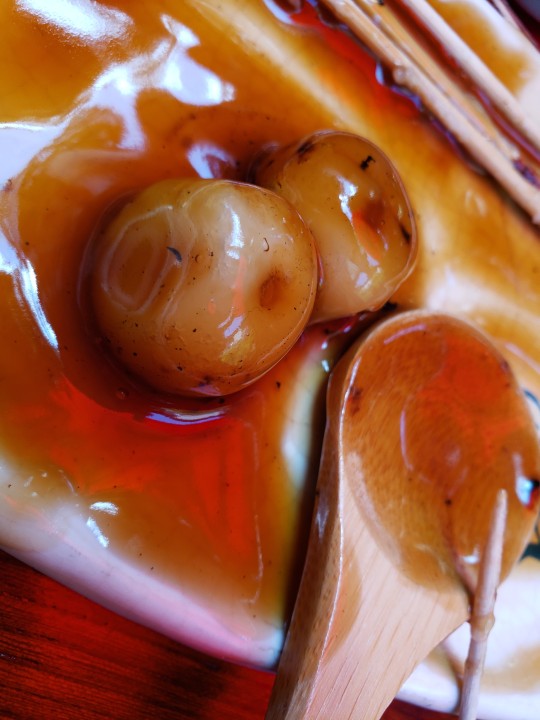
Follow me below for dumplings!
I know I seem lazy with Kimetsu Kitchen lately. I am cooking stuff, even though I hate cooking, okay? There's an ingredient I'm practicing with before doing it for another Kimetsu recipe but so far my results suck.
That said, I did choose to go buy Ohagi instead of making it, and I was almost so lazy that had I found loquats at the grocery store, I would have brought one home and taken a picture and said "it's Nakime, get it? It's a biwa."
To my credit, I have made mitarashi dango. It was pretty easy, too. The problem is that you can make so much mochi with a single small bag of mochi flour. It was years ago, I was trying it out with one of my siblings and we had so much mochi that we ran out of anko and quickly had to resort to looking up a mitarashi dango recipe to do something with all that other mochi. And it was good! It had a nice mix of saltiness and sweetness. But we had plates and plates and plates of the stuff, even in a household bigger than a certain ninja clan we couldn't find enough people to eat that stuff and finish it off. No thanks. I'm not repeating that. Here, here's an English recipe, you do it. I'm just here to be a dorky nerd.

I am a perfectly presentable human being. Not to worry, that's not the mask I actually went out in. This one was frustratingly made with the pattern upside down but it's got a spot more Haganezuka style, so I made it work.

The UNESCO World Heritage site referred to is Shimogamo Shrine (which you might know from another anime, Eccentric Family/Uchouten Kazoku, as the home of the titular tanuki family), one of the two major Kyoto shrines associated with the Aoi Festival. If you think I used the KnY cast for mnemonics in studying this festival for a Nerd Test, you are correct. One of the rituals of this festival is when the Sai-Ou, the shrine maiden whom this whole procession is centered around, cleanses her hands at this pond on the shrine grounds. This ritual handwashing is called "Mitarashi". Literally, (honorific)-hand-washing: 御手洗. Since Mitarashi Dango (みたらし団子) is typically written with the 'Mitarashi' in phonetic hiragana, I was stunned when I first read about the ritual (before knowing the origin of the sweet), for I thought the sweet was named like this because you have to wash your hands after eating something so sticky.
Unsurprisingly, the religious ritual is performed at a place called Mitarashi Pond, and there is a place for offerings next to it. The two paper lanterns on either side were contributed by the nearby tea house, Kamo Mitarashi Chaya.


The tea house is just across the street from the shrine grounds. Like many sites popular with religious pilgrims throughout history and all around the world, there are restaurants and gift shops lining the way to the sacred grounds to cater to all the visits, and in Japan's case, this is how many sweets become famous and carry an eternal tie with those religious sites even if the connections are tenuous. Some sweets you can only get by visiting the generations-old shops in person, other sweets are spread throughout the country and anyone can make them. This is what happened in the case of Mitarashi Dango, this tea house had a hit with their addictive sweet and salty sauce and now you can find it ready made in grocery stores across Japan.
Even Aoi, who is talented and can do anything, even cooking (she has my respect) says to Inosuke that she'll "go out and buy some" later because it's just that easy. Plus, my girl Aoi knows better than to make a giant batch of that stuff if she doesn't have to.

It's a very typical little tea house selling a typical array of traditional sweets. When I walked in the first thing they did was pitch their shaved ice to me. A fun fact: in their garden, they have a little temple dedicated to Kishimojin, literally, "demon baby mother god," who is a deity who had 500 children whom she loved and cared for but would steal unrelated children to eat them. A Buddhist monk hid her baby one day and she saw the evil of her ways, repented, studied Buddhism and become virtuous. Yeah, Muzan would probably sneer if he heard a story like that.
Anyway! That pond back on the shrine has another famous practice: washing away paper dolls which have soaked up the impurities and bad influences of the world on behalf of human beings. The simple paper dolls have a vaguely human shape, like Shikigami. I bring this up because while most people picture dango coming in sticks of three big dumplings (though the one Aoi gave Haganezuka had four), it's made here at Kamo Mitarashi Chaya with five small dumplings, to more vaguely represent a human form.


NOM.
I really like my mitarashi dango small instead of huge, it makes for a more generous sauce-to-mochi ratio, and while it can be troublesomely sticky and dripping to eat (I broke my toothpick trying to get them off the skewer and be neat), it is indeed as addictive as anything with a base of sugar or soy sauce might usually be. The small mochi is chewy and soft with a nice crispy texture on the charred bits.
This was a perfect amount to say "mm, that's tasty, I want more, more!! Okay, that's enough."
This tea house offers them for both eat-in and take-out, and having eaten them both ways, I strongly suggest eating them in person. With time to sit, the mochi gets firmer, and the silky sauce begins to harden so that all the dango gets stuck together, and it get even harder to have any delicacy as you eat them. If it wasn't bad enough trying to get my family to eat them all, the time I had these as take-home they were a gift to my office, and I had to force people to hurry and eat them before they were hopelessly stuck not only to each other, but to every surface in the office.
Now, having said all that about rice flour dumplings covered in a sugary soy sauce coating, what does this mean for Haganezuka-san? What connections are there to dive into?
I theorize nothing.
I think he just plain likes Mitarashi Dango.
#haganezuka hotaru#kimetsu kitchen#sort of#kny closet play#this frilly dress was the closest thing I had to his attire and I found the juxtaposition a little too much fun#no I did not use a kitchen knife to apply eye liner#but I thought about it
46 notes
·
View notes
Text
DCist: Art Installation Calls Out Community Erasure, Past And Present

In what is now known as Metropolitan Park — created in phase one of Amazon’s headquarters in Arlington — a red brick tower stands resolute, reminding passersby that nearly a century ago a community was erased nearby.
The simple structure, which stands 35 feet tall in an area filled with high-rises and office buildings, seems lost in time. Its red brick exterior evokes a long-past, industrial era — one similar, maybe, to the era East Arlington residents lived in.

When visitors step inside the sculpture, they’re greeted by 903 ceramic teardrop-shaped “vessels” — one for every displaced community member.
The space is quiet, intimate and — above all — inspiring. According to Durrett, who spoke in an interview with Street Sense Media, that’s exactly the point.
“I try to leave space for the viewer to experience awe,” Durrett said. “First you see this mundane brick structure that looks like it’s from some bygone period. And then you enter the space and you’re met with something completely unexpected. The viewer then has all of these questions, and then hopefully feels inspired to find the answers and then learn this history that so many people don’t know.”
That history is a tragic one. East Arlington was a victim of displacement long before the 1940s, according to a 2011 presentation by the Arlington Public Library. Many of its residents previously lived in Freedman’s Village, a post-emancipation attempt to house enslaved people, before they were forced out by the government — this time to build the Arlington National Cemetery.
The construction of the Pentagon, at the time the largest office building in the world, initially offered a welcome source of work for men in Queen City, according to Dr. Nancy Perry’s 2014 lecture at the Arlington Historical Society.
East Arlington residents worked on the construction of the Pentagon for months before they were informed that the project would unseat them from their home, Perry said. The Black Heritage Museum of Arlington notes that Queen City was specifically displaced for construction of the transportation corridor that would ferry commuters to the Pentagon.
Without the means to move their belongings, many families were forced to leave behind almost everything they owned, according to the lecture. They fled — first to different temporary housing sites, and then to different parts of the country. Many of them never saw their neighbors again.
It was that side of the tragedy — the human suffering — that the artist said she wanted to evoke. In addition to researching the historic community, Durrett arranged a meeting with one of its last living residents. Her conversation with 92-year-old William Vollin, she said, taught her more about Queen City than archives ever could.
“Being able to identify and speak with someone who has been carrying that history since they were 12 years old further humanized the experiences that those people would have gone through,” Durrett said. “When I was speaking to [Vollin], he didn’t recount losing his home or any material possessions. What he did speak about was the loss of his community. About how he never saw most of those people ever again. He speaks about the destruction of Queen City as though it just happened yesterday.”
But the sculpture is about more than a single community, Durrett said. According to data from the housing search site Apartment List, D.C.’s cost of living is 53% higher than the national average — one of the least affordable cities in the nation.
“Queen City” tells a story of Black displacement at a time when, according to analysis by the Urban Institute, the District’s Black population has been declining for decades. The sculpture, according to Durrett, teaches more than just history.
“The value of learning that history is connecting the dots, it’s seeing how this sort of erasure persists into the present day.”

To create the 903 teardrops that line the interior of “Queen City,” each representing a displaced resident, Durrett commissioned 17 Black ceramicists from across the country.
“One thing that I asked them,” said Durrett, “was to bring forward stories of a Queen City in their own community. Each and every one of them had one.”
Although the artists might have been aware of each other’s work, this was their first opportunity to work together, Durrett said. Each ceramicist had varying abilities and experience, especially with the teardrop-shaped vessels Durrett was requesting.
This led to a “beautiful thing” happening, Durrett said. The ceramicists, rather than working independently on their portion of the commission, collaborated. Artists with more expertise met with less confident ones, creating an atmosphere of compassion and partnership.
In the process of memorializing a community, Durrett said, they had become one themselves.
“Using community, the very thing that was destroyed when East Arlington was razed, to actually create something as grand and long-lasting as ‘Queen City,’ was beautiful,” Durrett said. “It’s not just about the thing, the object — it’s about the process of making it. It’s about showing what we’re all capable of when we work together.”
#Freedmens Village#Queen City#Arlington#Black Cities raised for nothing#pentagon#Black Lives Matter#real estate fuckery#american lies#american hate#white supremacy#imminent domain#East Arlington VA#Black Communities#Black History in america#american history
3 notes
·
View notes
Text
Unit 9 Blog Post
Interpet (through this blog) the most amazing thing you know about nature – get us excited. This is your blog – your audience isn’t in the field with you so bring the field to your armchair reader.
There are so many concepts of nature that I can speak upon that amaze me, such as bioluminesence, the beauty of the northern lights, and the captivating diversity in nature. However, for this week’s blog, I wanted to take a different approach and reflect upon the beauty that humans have provided within nature. Every piece tells a fascinating story; a collection can form a narrative that spans centuries, continents, and cultures.
I find it astounding to look back at the technical wonders that have shaped history, especially as we stand on the shoulders of innovation in the 21st century. When the world's wonders, like the Great Wall of China, the Pyramids of Giza, and the Colosseum, were built, they were engineering marvels. Fast forward to the present, and we are surrounded by a brand new category of wonder: the digital world.
I believe that a lot of the reason we are able to look back and appreciate our history is due to technology. It makes it so convenient for all of us to enhance our knowledge on a topic or concept that we find interesting. It is also worth noting that technology can aid in the transmission of interpretive messages at sites, allowing more visitors to learn about the location (Beck et al. 2018, p. 465). For example, when my family and I went to Los Angeles, we visited the Griffith Observatory (same planetarium seen in ‘La La Land’!). During this visit, we watched a show at the Dome at the planetarium that used the Zeiss Star Projector. The live show we watched was ‘Signs of Life’ which uncovered what it took to put life in the universe. I was truly captivated, along with the audience, by the magnificence of technology and how it can be used to interpret aspects of our history.
In the modern era, prominent technological wonders include the Hubble Space Telescope, the International Space Station, and Mars rovers. These innovative technologies have allowed for explanations of many mysteries in space as well as discoveries. Furthermore, the Hubble Space Telescope has provided us with countless stunning photos of space exploration and the beauty that exists within our solar system—a universe that will never cease to amaze me.
However, among these technological wonders, it is important not to forget the wonders that breathe history—true testaments to human ingenuity and ambition. Each structure within nature holds a unique place in history, leaving a persistent mark on the world (Beck et al. 2018, p. 329). As an Egyptian, it only feels fitting for me to speak of the brilliance of the pyramids of Giza. This is the only one of the Ancient Wonders of the World to survive largely intact today, along with its intricate details and massive scale. Though it remains a mystery how the ancient Egyptians built the pyramids without modern technology, it sparks many theories on how exactly they were created. Nevertheless, it’s inspiring how these architectural marvels, whether ancient or modern, captivate tourists with their awe-inspiring designs and historical significance.
I hope you all find this as interesting as I do, we're embedded within nature and that includes the history that precedes us and continues to evolve. It is also fascinating to me personally how technology and the human creations embedded within nature can strive for many diverse interpretations!
I have provided some images taken from the Hubble Space telescope below :)



References
Beck, L., Cable, T.T., & Knudson, D.M. (2018). Interpreting Cultural and Natural Heritage For a Better World. Sagamore-Venture Publishing.
2 notes
·
View notes
Note
Let’s watch!

*clicks a button* Now... time to begin the presentation...

(Here it goes...)
...
...
[X]

'Welcome new employees, to Future Foundation - an organization that is to defeat the Ultimate Despair and undo the damage their actions had brought upon the world...'

'Future Foundation has 15 Division and Heads that you can choose to work under, here we are to introduce our leaders of each organization!'

'The Leader of Future Foundation and head of the 1st Division; Kazuo Tengan, he was Hope's Peak Former Headmaster which his duty is to provide overall directions and leadership of Future Foundation and help lead Future Foundation to prosper but sadly as of recent, he's going to be going into retirement due to medical reasons, however fear not - soon another will take his place...'

'The Vice-Chairmen of Future Foundation and head of the 2nd Division is Kyosuke Munakata; Now while he isn't leader yet, he will lead soon and we can see why as his Division manage day-to-day operations of the Future Foundation, construction of facility; expansion of organization; military and peacekeeping force!'

'Head of the 3rd Division; Koichi Kizakira who help in the creation of the training video also helps with Human resources, include scouting for potential members and personnel assignments. He often will go out and find those that would join our foundation which he likely presented this video to you - he is very likely the most hard-working of all the foundation head!'

'Seiko Kimura, she is the head of the 4th Division which is in charge of Research and develop medical techniques, often her clinics and medications will assist those in need and provide aid if there is no room at hospitals, come to Seiko's clinic for all your needs!'

'Kyoko Kirigiri which she's the head of the 5th Division which helps with Intelligence, Inquiry, and Counter-Espionage. Given her actions in the killing school life and how she assisted with taking down Junko Enoshima, it was agree upon that she would become a Future Foundation Head, so who better then Kyoko to help with cases!'

'Juzo Sakakura who is in charge of Policing, including riot suppression and investigate special crimes; often leading the charge investigation after the 5th Division has gather information while the 6th Division handles those cases so you can rely on Juzo as well.'

'Miaya Gekkogahara who's the head of the 7th Division which she helps with Information System security and administration along with Research and develop therapy to cure Despair. She even helped created the Neo World Program - a software that is to be made public to help people worldwide! Truly an amazing programmer!'

'In charge of the whole 8th Division, young Otoha Yasuda which helps with Long-term stable food procurement. Even creating shelters and orphanages for those that need a roof over their head so if you want to help people in need, work in the 8th Division.'

'Hideyoshi Tamon, he's in charge of the 9th Division which helps with Armament R&D, Production, and distribution. Offering weapons to other Division to help combat despairs so if you want to help with weapon productions do work here.'

'In charge of assistance in reviving education, culture and religion; Mio Yonaga is the 10th Division Head which helps to restore history, culture and world heritage sites which she has become quite the figurehead for all Future Foundation - even many referring to her as 'Mother Mio' which she plans to bring back education and history.'

'Daisaku Bandai, Head of the 11th Division which often helps with assistance in restoring agriculture in disaster area. He is working on ways to assist with the pollution. He is often working with the 8th Division to provide food for them - they are a very strong duo.'

'Head of the 12th Division; Gozu helps with assisting in restoring infrastructure; such as transportation, communication, and public facilities which he's even restore entire cities and towns phone-line and even can fight as well!'

'Head of the 13th Division; Ernesto Gomez who is in charge of restoring Law and the Jurisdiction; while he doesn't come around as often he is quite busy restoring law and even is in contact with other Division so if you wish to help with that; join this Division.'

'???? Is the head of the 14th Division - they are in charge of Public Relations; spreading news of Future Foundation's activities to the public. They also travel around the world and work on restoring relations and putting an end to riots!'

'And finally, the head of the 15th Division, Biju Hakoda which he leads to restoring Economics, Money, Banking and Commercialism which even during the tragedy; he was able to house many of those that suffer from the tragedy leading to him being a Future Foundation head!'
'As say, working at Future Foundation leads to you help people and leading to a hopeful future, so if you want to join - join today and work towards a bright and shining future for the sake of Hope.'
*CLICK!*

*stands up* Now that you know Future Foundation, you can ask any questions you want and I'll tell you to the best of my abilities!
#dr#danganronpa#dtfa#despair to future arc#fs:rw#future side: re write#sdr2#super danganronpa 2#dr3#danganronpa 3#dr:thh#danganronpa: trigger happy havoc#nagi nanami#hajime hinata#kazuo tengan#kyosuke munakata#koichi kizakura#seiko kimura#kyoko kirigiri#juzo sakakura#miaya gekkogahara#otoha yasuda#hideyoshi tamon#mio yonaga#daisaku bandai#great gozu#ernesto gomez#makoto naegi#biju hakoda#anonymous
3 notes
·
View notes
Text
Czechia, Ukraine, and Vietnam with Immortal! Child! Reader Headcanons
Warnings: Fluff.
Anonymous Request: Hetalia request:
Is it okay to do more Immortal!child!reader! Headcannons?
But this time is one of the female nations: Ukraine, Vietnam and Czechia I pick these randomly because I thought it would be interesting.
I'm sorry if I'm requedting too much Immortal reader. Have a nice day.
.
.
.
Czech Republic
Czechia is proud of her many achievements in life. She’s lived through living under other empires as their insubordinate, has made herself the boss of her own country, and is a proud home to fourteen of the UNESCO World Heritage Sites. Because of those achievements, she’ll automatically assume that she’ll be a wonderful guardian to the reader.
Her arrogance isn’t wholly unwarranted. Even though she didn’t exactly raise her brother, Slovakia, she did have a hand in making sure that he survived into the modern day. While she is more than competent, she may either overestimate her ability to take care of an immortal child or overcompensate if she ever suspects she’s not doing the most that she can do.
Because of her relationship with Slovakia, she can be a bit… hot and cold with her relationship with the reader. There may be times when she may deny that she truly cares for the reader, but her actions speak otherwise. She can also be a bit rude and blunt, but if the reader listens closely, they’ll hear how much she cares.
Czechia, while she may be stubborn, can be convinced to apologize if the reader feels that her behavior is unjustified or if her blunt personality needs to be curbed. She’ll immediately feel guilty and try to make amends. The way she does this is through acts of service: she’ll make the reader’s favorite foods, give them money to buy themselves little toys and trinkets, and give them little candies and snacks for them to enjoy. Rest assured, though, if the reader requests it, she will apologize.
Czechia is fond of giving the reader piggyback rides, especially when they aren’t expecting it. When she and Slovakia were younger Nations, they would take turns carrying each other until they were too old to do that anymore. In a way, it’s Czechia’s ode to her former childhood and continued brotherhood with Slovakia.
Despite her somewhat haughty personality, Czechia can be a bit of a troublemaker and likes to play pranks on people. Once she becomes more comfortable with taking care of the reader, she may surprise or prank them whenever the urge arises. Don’t worry, she won’t be as ruthless with her tactless pranks she plays on Nations she doesn’t like. Her pranks will be fairly tame and are usually guaranteed to make the reader laugh.
While not as accomplished or as talented like Kugelmugel or Veneziano Italia, Czechia definitely has an affinity for the arts. She likes to doodle little drawings here and there. At first, she’ll keep her hobby a secret, but eventually, she’ll open up and start giving them to the reader like presents for special occasions or prizes for behaving well.
Czechia doesn’t say “I love you” all that often. As was mentioned before, she prefers acts of service, but she also doesn’t mind spending a lot of time with the reader. She’s abrasive and cold at times, yes, but when the reader reads between the lines and actually listens to what Czechia is saying, they’ll find that she loves deeply. Her “I love yous” are present when she takes the reader out to hike in her national forests, when she lets them peruse her battered sketchbooks. The affections whispered can be heard when Czechia berates the reader for doing wrong or when she gently chides them to eat more food so they can grow up to be big and strong. But, sometimes, when Czechia is feeling particularly brave and carefree, when the timing is just right, she’ll scoop the reader into her arms and tickle their ears with a muttered, but affectionate “I love you.”
Ukraine
A human child who is actually immortal? Color Ukraine very surprised and concerned. Once she gets past those initial emotions, she immediately becomes consumed by the very spirit that has devoured the souls of other motherly figures, both past and present. That is, to say, she immediately becomes enamored with the reader and immediately scoops them up and starts swaying with them in her arms. (She does not care if the reader is bigger or heavier than her).
Effectively, the reader is hers unless they say otherwise.
Ukraine is a wonderful Nation. She is sensitive and kind: a mother to all and someone who cannot take it if someone is treated badly. Not only will the reader feel warm and safe under their care, Ukraine will make sure that her siblings, Belarus and Russia will also claim the reader as their own. Ukraine is a superb mother by herself, but it doesn’t hurt to have her siblings as backup guardians in case anything happens.
The reader will be able to recite all of the stories Ukraine will tell about Belarus and Russia. Even when it seems like Ukraine has a new story to tell, the reader will immediately pick up on the exact content of the story, the century it took place in, and what her siblings were wearing. Ukraine can’t help it! She loves all of the children under her care and she will regale others with all of her beloved memories if she has to!
The reader may have to brave a lot of Ukraine’s tears and tenderhearted nature. She may have raised both Belarus and Russia when they were younger, but they were all Nations. The reader is human. There may be times when Ukraine may be distraught or completely blindsided by politics and social unrest in her country. As a result, she may not be as present as she would usually be or she might be more emotional than usual. She’ll try to make it up to the reader at a later date, but the point still stands: there may be the times when the reader may have to be Ukraine’s rock during hard times.
While the above point may be viewed in a negative light, she is still very much warm and nurturing. She’ll knit the reader a variety of scarves and sweaters, all of them in traditional patterns or she might even entertain utilizing designs from modern day aesthetics.
Ukraine also has a wonderful singing voice. She’ll be sure to always sing the reader to sleep every night. It doesn’t matter if she and the reader had a fight, if she isn’t feeling well, or if there’s a world meeting that needs tending to. She will find a way to make sure that the reader knows that she loves them and that she will always be devoted to them. Her lullabies range from modern day pop songs to church hymns no longer sung, and on the spot ditties that she made up long ago to dry the tears on her siblings’ faces.
When Ukraine tells the reader she loves them, it’s always done with a slight blush on her face and her eyes turned just a hair away from the reader’s eyes. She’s not ashamed that she loves them, far from it! She’s just overwhelmed with the feeling that comes with proclaiming her love that she can’t fully understand it or confront it, so she makes up for it by saying it clearly, but softly: it’s only for the reader to hear. Sometimes, when the reader is sleeping after her lullaby, she’ll sing it to them and brush their hair away from their face before she herself goes to bed.
Vietnam
Vietnam is a shy and reserved person, not prone to being overly boisterous and loud like certain other Nations. When she first meets the reader, she’s immediately nervous and wants to know how the reader has survived for so long without a guardian. When it becomes obvious that the reader has no one else, she will immediately bring them into her home.
She’s quietly confident in her abilities to be a maternal figure for the reader. Although not as outspoken or as overbearing as the rest of her Asian peers, like China, her devotion and loyalty to the reader is palpable. While most other parents would loudly declare how much they love their children and shower them with loud displays of public affection, she prefers smaller gestures like holding the reader by the hand or gently patting them on the head.
She instills in the reader many virtues that she herself has valued over the centuries. Respect for elders, love for the family and community, honor, respect, and education. Whenever Vietnam gets invited to world meetings or gatherings among the Asian community (mostly ASEAN), she usually sets aside some time to tell the reader to be good and to behave. Although it may seem annoying to some, Vietnam truly means well and knows that because of the age of most of her peers, disrespect would be deemed highly offensive.
Furthermore, Vietnam hopes that the reader will take to their education and studies with zeal. Education is highly regarded in her culture because it is a stepping stone to a better future, which is something that she hopes she can provide for the reader. If the reader has any problems with their studies, Vietnam is more than willing to help them.
Because Vietnam is so close to the rest of the members of the ASEAN community, she’ll take the reader to meetings. Vietnam will of course try to supervise how the rest of the members treat the reader… and to make sure that the reader doesn't pick up some of the more concerning habits from her coworkers. (And yes, that includes trying to make sure that the Philippines doesn’t spend ninety percent of the meeting taking selfies and pictures with the reader for his social media).
Furthermore, Vietnam loves to nurture the reader to their full potential. Although she is soft spoken, she will become very vocal when it comes to the reader’s talents and interests. Children deserve the world and more and the reader is no exception. Even if the reader has a passing interest in something, Vietnam will be right there with them cheering them on.
While Vietnam does not consider herself photogenic and does not personally like getting her picture taken, she does like taking photos and videos of the reader. Just small things, like if the reader received a good grade in school, small little skits, cute dances, etc. With the reader’s permission, Vietnam will send these cute memories to close friends.
Saying “I love you” comes really easily to Vietnam. When you’re an immortal and there are very few of you around, it’s wise to keep and maintain social connections closest to you. She won’t say it all the time, but she’ll say it often enough that the reader is never in doubt about Vietnam’s adoration for the reader. Her “I love yous” are soft spoken and warm, always accompanied with a loose and sunny smile and a gentle pat on the cheek.
.
.
.
If you want to donate a Ko-Fi, feel free https://ko-fi.com/devintrinidad.
HETALIA AXIS POWERS/WORLD SERIES MASTERLIST
#hetalia#hetalia axis powers#hetalia World Series#hetalia czechia#hetalia Ukraine#hetalia Vietnam#aph czezhia#aph Ukraine#aph Vietnam#hws Czechia#hws Ukraine#hws Vietnam#aph Czech Republic#hws Czech Republic#hetalia Czech Republic#dearestones#devintrinidad#platonic reader#hetalia reader#child reader
46 notes
·
View notes
Text
Eden's Apple - Interpretation and ire in the works of Stuart Hahn
Medulla Art Gallery featured a talk with the Artist Stuart Hahn on Wednesday eight August twenty twenty-three. It started tentatively and ended boisterously with interviewer Natasha Ramnauth steering the conversation into territory raised by a guest about the carnivalesque. That was provoking enough, but there was a much more niggling issue that caught my attention as Mr Hahn spoke about his work.
As an avid admirer of his prolific collections over the decades I was alerted when yet again I heard him mention that he could not show nudity in public. At prior shows he had said those exact words to the audience.

Stuart Hahn - The Fall of Man
In Jamaica,the Laura Facey bronze sculpture Redemption Song is met with all the respect it deserves in a declared homophonic island. No one is deeming the public work indecent or homocentric. I found myself wondering why and how Mr Hahn has been dealing with this no man’s land quite literally for so many decades?
What does Mr Hahn have to be apologizing and hiding for? Is Stuart Hahn a maverick where nudity and male at that is concerned?
The short answer is no.

Stuart Hahn - The Fall of Man
He is preceded by the likes of Boscoe Holder and Hugh Stollmeyer. It is curious, but not fully necessary to know that those names represent men who were homosexual or bisexual. This is to be included only because of the fact that sexual history has been hard fought particularly in ultra religious spaces like Trinidad and Tobago.
Is Mr Hahn exploiting the form by showing explicit sexual acts? No.
In fact Mr Hahn only uses naked imagery in contexts where they are called for.
But instead of being caught up with his exceptional skills as a draftsman of the anatomy it is easy for the media to continue to hound his use of drawing what I can only call the subversive penis. Vaginas and breasts hold neutral ground.
Meanwhile it seems that the erect, semi-erect and inert penis causes great consternation.
We all reel daily as we read and hear of barbarically cruel murders. Yet, the penis in art is being ‘held’ as too unpalatable for sensitive constitutions.
Is there a connection between crime and the male body?
This may be an absurd question, but Mr Hahn’s work and legacy might hinge on the fact that a sense of being out of touch with the body is an important marker for all of us. An automatic fear or distaste to observe classical art in a caribbeanesque context narrows the lens.
Mr Hahn was born in Nevis of a St. Kittitian mother and Trinbagonian father. Of Caucasian heritage in a mostly brown land, a child of colonialism in San Fernando and a gay man in the Caribbean space during Black Power and Oil Money is dizzying enough. It makes one want to tear off one’s skin.
Nudity and the drawing of skin titillates. It is peeling back layers and finding oneself in private territory. Art has lauded nakedness for centuries, so, to now grapple on an island with what it means - is curious to me particularly when a few years ago Trinidad and Tobago was given the dubious honor of being in the top ten of users of porn sites in the world.

Stuart Hahn - The Murder of Abel
Mr Hahn’s Biblical, Classical Literature, Indian Mythology and local Folkloric pieces do far more than occasionally dabble in nudity. By focusing on the trite, everything that his work demonstrates gets shunted to the side. Mr Hahn’s work connects the complex past with the continuously confusing present. He shows great discipline when drawing and rendering the form with prisma color pencils and pen and ink when paint is so much faster - his almost religious penitence in lauding his characters with wings, togas and ropes of hair - yes there is homo eroticism in the work.
However, homo simply means man. I will not go down the prickly path of Adam and Eve not Adam and Steve. I also will not convince anyone of changing their sensitivities or sensibilities. I write to place Mr Hahn’s work where it needs to be. He is neither a pornographer nor a sensationalist.
That is so clear in societies great love of Derek Walcott's TiJean and his Brothers the children’s book and his innovative approach to the Black Madonna and Child way before it was fashionable to do so. As a white, Caribbean gay man making Art in Trinidad and Tobago and causing debate makes Stuart Hahn’s career an important marker in Art history - one that we all take for granted. We speak fluidly about Impressionism or Abstraction. But what of Stuart Hahn’s drawings? I suggest that as we look at Art in Trinidad and Tobago, we begin to observe what is before our very own eyes:that we respect and honor ours in the same way that we have finally given Pan the attention deserved.
#sexypink/Stuart Hahn#sexypink/Medulla Gallery#sexypink/Eden#sexypinkn/shows on now in Trinidad and Tobago#sexypink/sexypink writing on Art#tumblr/writing on Art#tumblr/Stuart Hahn#tumblr/Medulla Art Gallery#tumblr/drawing and illustration in Art#art drawing and illustration#stuart hahn#medulla art gallery#trinidad and tobago#eden#biblical subject matter in Art#Art in the Caribbean
2 notes
·
View notes
Text
June 11 - Himeji-jo
I have sad news to report. Today is the final day of Japanese breakfast. My heart broke when I found out about this. It will be missed. In terms of what we did today, we traveled about 2 hours out of the city of Kyoto to the World Heritage site that is home to Himeji castle. This castle is one of the few structures that has survived the many destructive acts that plagued Japans past, still standing tall in its original glory. I continue to thank myself for purchasing the newest Zelda game as it continues to aid me on our longer train routes. When we arrived at the station we broke up for lunch and I had probably the best Indian food I’ve ever eaten (the price was also godlike). Once I stuffed my face we left for the castle. The structure itself clad in all white was towering, but we were allowed to enter the highest point in the keep which surprised me (most buildings we’ve visited have been inaccessible). The interior (which is now empty) is of high craftsmanship with all the wood (the entire structure is made of wood) covered in a beautiful varnish which makes the floors incredibly smooth. Paying attention to the layout it was clear the entire structure was oriented towards defense as many chokeholds and sharp turns mark the path upwards. Once we arrived at the top the entire city unfolded with large mountains surrounding it in the background. All the walking had me pooped, and I’m not certain but I feel like the sleep here doesn’t get me to 100% each night so I turned in early.
Academic Reflection
While this connects with a previous reading (the one on forestry practices) this castle fully displayed the daimyo’s requirement for large strong trees. Entire pillars in the castle were incredibly thick trunks which showed their age in the rings that were visible. The keep also had 8 flights of stairs so the scale of the structure (and the wood required) is quite massive.
Similarly mirroring the integration of green spaces in Tokyo, this castle was made using the slope of a mountain as part of its construction. The Japanese did this for a number of reasons such as defensibility, and resistance to fire. It’s evident that this willingness to coincide with nature has been present early into Japanese history as opposed to the adversarial nature the US has had with its own nature. While the castle itself lies on a mountain it also borrows design features from nature itself such as sloping and triangular constructions that increase the castles defensibility. However this focus on defense is quite ironic, considering the Tokugawa period (when the castle was reinforced by Ieyasu’s son in law according to a sign at the castle) was known for its peace. Obviously this is a point of hind sight. Todays readings also continued to build on the knowledge surrounding early Japanese urbanization. With the creation of castle towns, economy and populations increased rapidly. Like we’ve read earlier this created a problem for more rural areas as peasants from those regions would attempt to start a new life in the castle town which offered a higher level of prosperity. Interestingly this flight mirrors that which occurs in modern Japan, when a new Shinkansen line opens in a area.
What I personally enjoyed from the readings was furthering my understanding of the social dynamics within ancient Japan. While the daimyo and samurai were still the ruling class, it wasn’t as strict and brutal as a previously believed. Individuals shaped much of the life and culture in ancient Japan and this is evident in the way the cities unfolded. While the daimyo had plans for how they would like their towns to be constructed leeway was afforded to individuals in the construction of their homes and establishments for work.



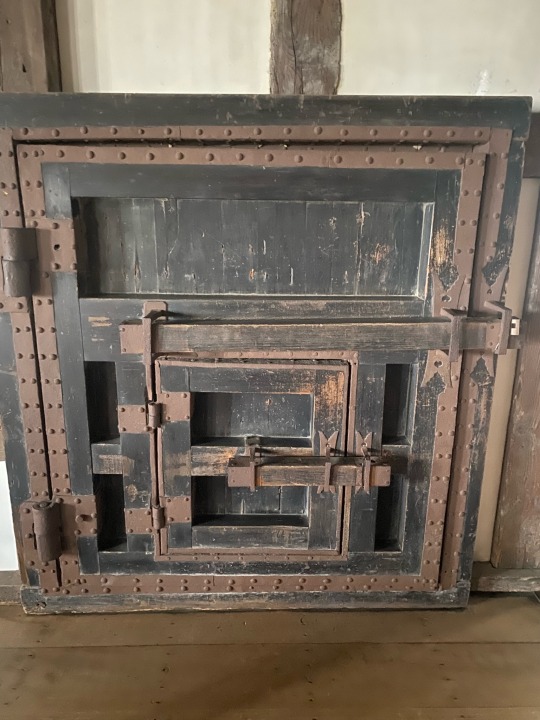


2 notes
·
View notes
Text
A Walk Across The Ruins Of Nalanda
And there I stood..right at the main gate. On the path leading into the realms of the bygone era. The eyes were firmly fixed on the whirlpool of red bricks. The mind hopes to unravel the mysteries attached to the spot, once a sacred site of an uninterrupted transmission of knowledge over 800 years !!!. And the heart hoping against hope to turn back the sands of time, and become a part of the legends and folklores that inspire educationists and knowledge hunters to throng to the ancient site in probably one of the remotest parts of the modern world !!!
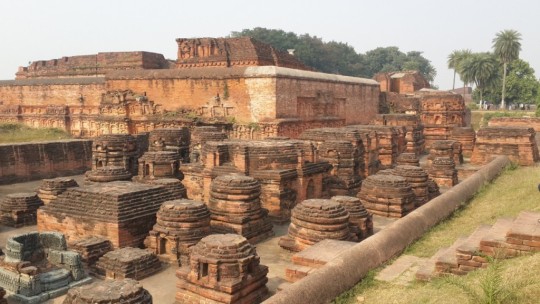
Being an ardent history lover and a necrophiliac by heart, the ruins of Nalanda had always tantalized my conscience, weaving a web of a relentless desire to explore and roam around the legendary site, and experience the marvel of the most ancient University of the Indian Subcontinent !! After all, the present-day ruins of Nalanda were a center of learning from the 5th century to 1200 AD.
A serene sight of the well-manicured gardens, merging with the ruins in red bricks, welcomed me as I set foot into the heart of the compound, now designated as a UNESCO World Heritage Sight !!! I hired a Govt approved guide to understand the intricacies attached, and extract some relevant meaning out of the pile of those red bricks of one of the first residential universities in the world !!
As we walked across the campus, my imaginative mind could not stop drawing a picture of what this place might have looked like in its heydays !!! An architectural masterpiece to say the least !!
Nalanda’s existence can be traced back to the 5th-6th century BC, as both Buddha and Mahavira are said to have visited and delivered lectures in the village !! Nalanda was perfectly placed on the trade route connecting the nearby town of Rajgir, the then capital of the mighty Magadh Empire. According to some sources, Emperor Ashoka built a great temple in the village during the 3rd century BC !!
But the noted history of Nalanda began under the glorious Gupta Empire. The foundation stones of the university are said to have been laid down by the 5th century Gupta Emperor, Kumaragupta I (415-455 AD). Many additional monasteries and temples were gradually constructed by his successors. Post the Gupta Empire, Harsha, the 7th century Emperor of Kannauj, is attributed to have taken important steps to maintain the University’s appeal !!
The guide further elaborated that during its zenith, the Mahavihara (University) contained up to 10,000 students and 2000 teachers !! The subjects taught ranged from Economics and Political Science to Metallurgy and Logic !! Such was Nalanda University’s aura and appeal that it saw students and scholars from Turkey, Korea, Japan, Persia, China, and Indonesia flock to its revered environs to grasp knowledge in its purest medium !!
We roamed around the campus soaking in the aura and coming across ruins of numerous hostels, temples, monasteries classrooms, and meditation halls. I even made my way inside a small room with a dark spot on the ceiling. “It used to be the kitchen”, told my guide !! “The students used to cook their meals during those days “, he further elaborated. The rice grains are still kept preserved at the Nalanda Museum, located right opposite the entrance.

I still remember the goosebumps I experienced the moment I stepped into a student’s room !! The stone bed and study temple can still be seen. There was a small circular pit at one corner of the study table, which is assumed to be an ink pot!! Standing in the middle, I could visualize the room lit with a lamp and a student engrossed in his studies !! Didn’t want to act as a hindrance to his concentration, so we decided to step out and continue with my exploration !!
“But how did it all end”, I enquired my guide. It's a question that had been burning inside me for the last few minutes. Since I started realizing the impact and the sheer importance the University held all around the world in those days. I wondered how could something of this nature could suddenly cease to exist.
I learned that the decline and the subsequent end of Nalanda University happened hand in hand with that Buddhism in those times. Since the 7th-8th century AD, the gradual rise of Hindu philosophy led to the waning of Buddhist following among the common Indian.
And the final blow came in the form of the Muslim invasion across Northern India during the 13th century. According to legends, around 1200 AD, a Muslim ruler by the name of Bakhtiyar Khilji, on his plundering spree, presumed the large University structures and the legendary Nalanda University Library to be a fort. He attacked the university and set the library on fire, gutting its believed collection of around 9 million books !!! The colossal library kept burning for months to come !!
It was evening by the time my tryst with the ancient Nalanda Mahavihara approached its highly unwanted end. As the slanting golden rays of the sun announced the fast-approaching twilight, I stood still in the middle..watching the red bricks erupt in a shade of honey glaze. Wanting to narrate the glorious stories from the past. Singing the lullabies of something mightier than power…Knowledge it is !!
3 notes
·
View notes
Text
Unit 06: Nature Interpretation through History
Preserving Memories of the Past
“There is no peculiar merit in ancient things, but there is merit in integrity, and integrity entails the keeping together of the parts of any whole, and if these parts are scattered throughout time, then the maintenance of integrity entails a knowledge, a memory, of ancient things. …. To think, feel or act as though the past is done with, is equivalent to believing that a railway station through which our train has just passed, only existed for as long as our train was in it.” ~Edward Hyams
This quote by Edward Hyams describes how the past as an individual unit holds no quantified goodness. Instead, there is goodness in integrity, which means to uphold pieces of the past and to bring forth these memories and concepts to the future. By ignoring the memories of the past, it is as if they never existed.
Preserving memories of the past should hold high value as stories of the past can guide how lives are lived in the present. Both good and tragic memories of the past hold high importance and neither should be neglected—especially tragic memories. Tragic stories such as the struggle for equal rights for women, and civil rights movements for minorities, are important stories to tell as survivors are able to share their stories and become important figures in agents for change (Beck et a., 2018). For example, WWII Holocaust Museums and concentration camps around the world allow humanity to acknowledge the millions of victims lost, and help educate the world and prevent history from repeating itself. By preserving these experiences and memories, acts for change in social issues as described earlier are more likely to be conducted and acknowledged.
An important factor in keeping the integrity of the past is through interpretation. Interpretation allows for past stories and artifacts to be shared with humankind. Without interpretation, artifacts are simply old objects, historical sites are ordinary pieces of land and traditional celebrations and ceremonies are purely sources of entertainment (Beck et al., 2018). Interpretation brings life and meaning into the past, where people may have not been able to acknowledge otherwise. It also provides us with explanations on why certain practices and traditions are prevalent in the present. With this knowledge and integrity of the past, ultimately it makes life more meaningful.
My first experience with nature interpretation that focused on history includes Black Creek Pioneer Village, which is a history museum in Toronto, Ontario. Growing up in Vaughan, it was inevitable that my elementary school would make a trip to this site. This heritage museum contains 40 historic buildings, representing life in the 1860s (Smith, 2013). Some buildings in this attraction remain on their original sites, however many were brought over between the 1950s and 1980s to add to the preservation of the mid-19th-century rural and village life in Ontario (Smith, 2013). It was here where my class went through a walk-through of ‘a day in the life’ living in the 1800s. We were educated on mid-19th century artifacts, and were taken through the daily tasks and careers of a pioneer villager. With this experience, it gave me a better understanding of how individuals lived back then and how changes in technology greatly affected the world we live in today. With this experience, I recognized how important it is to educate children on the integrity of history and historical sites, which ultimately leads to a more educated generation and gives life purpose.

Image of building from Black Creek Pioneer Village
References
Beck, L., Cable, T. T., & Knudson, D. M. (2018). Interpreting cultural and natural heritage: For A Better World. SAGAMORE Publishing.
Smith, D. (2013, January 20). Toronto feature: Black Creek Pioneer Village. The Canadian Encyclopedia. Retrieved February 13, 2023, from https://www.thecanadianencyclopedia.ca/en/article/toronto-feature-black-creek-pioneer-village#:~:text=Black%20Creek%20Pioneer%20Village%20contains,late%201950s%20and%20early%201980s.
Image taken from: https://blackcreek.ca/
2 notes
·
View notes
Text
💐 The Fascinating Origin and History of Mother's Day
The Ancient Roots of Honoring Mothers
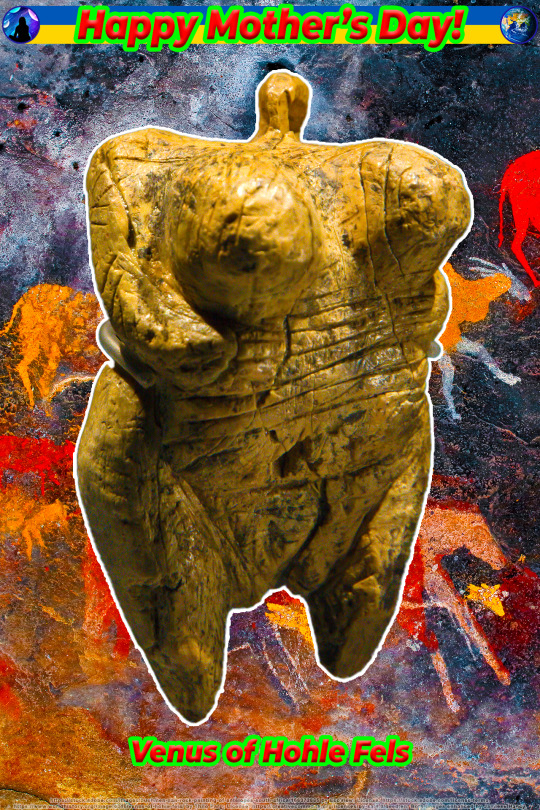
Mother’s Day is a holiday we celebrate every year to show our appreciation for the mothers and motherly figures in our lives. But how did Mother’s Day actually come to be? The history of Mother’s Day involves both ancient and modern traditions.
Mother-honoring traditions have deep roots in ancient cultures around the world. Many ancient religions and civilizations revered a mother goddess – a powerful female deity who represented motherhood, fertility, and the life-giving forces of nature.
The Venus of Hohle Fels is the oldest undisputed example of a depiction of a human being and is believed to represent a fertility goddess. The figurine is made of mammoth ivory that was unearthed in 2008 in Hohle Fels, a cave near Schelklingen, Germany, within the Swabian Jura United Nations Educational, Scientific, and Cultural Organization (UNESCO) World Heritage Site. It’s dated to between 38,000 and 33,000 BCE, which is associated with the earliest presence of Cro-Magnon humans, the first early modern humans, in Europe.
The worship of mother goddesses was still prevalent tens of thousands of years later in Mesopotamian, Egyptian, Greek, Roman, and other ancient civilizations. Some of the most well-known ancient mother goddess figures include Isis in Egypt, Cybele in Anatolia, Demeter in Greece, and Juno in Rome.
These mother goddess figures were celebrated through festivals, rituals, and temple worship ceremonies. These events often included pilgrimages and elaborate offerings that honored the sacred role of motherhood in sustaining life and the maternal activities of creation, nourishment, and protection.
Reverence for mother goddesses laid important groundwork for the modern celebrations of Mother's Day and the honoring of mothers in many cultures today. Understanding these ancient origins can provide context and meaning to how we continue to celebrate and appreciate mothers in the present day.
Modern History of the Mother's Day Holiday

Mother’s Day is unique in that it has a totally feminist history. The idea of Mother’s Day started taking shape in America in 1868 when social activist and leader of a West Virginia women's group Ann Maria Reeves Jarvis created “Mothers’ Friendship Day.”
Ann Maria Reeves Jarvis brought mothers together from both sides of the Civil War to promote peace and reconciliation. She conducted meetings and workshops where mothers discussed health, hygiene, proper care, and welfare of mothers and children.
She also started “Mother's Day Work Clubs” to raise money to buy medicine and provide assistance to poor families who were suffering from high mortality rates due to disease. These clubs were a huge success and soon spread all across the country.
In 1870, Julia Ward Howe wrote the Mother’s Day Proclamation as a mother's response to the American Civil War. Her proclamation called on women to use their positions as mothers to influence society to end all wars. She advocated for women to fight against the unjust violence of war through their roles as mothers and protest the futility of their sons killing other mothers’ sons.
Howe wrote: We will not have great questions decided by irrelevant agencies. Our sons shall not be taken from us to unlearn all that we have been able to teach them of charity, mercy, and patience. We, the women of one country, will be too tender of those of another country to allow our sons to be trained to injure theirs.
In 1905, Ann Maria Reeves Jarvis died. Her daughter, Anna Maria Jarvis held a memorial for her in Grafton, West Virginia which was attended by over 400 people. Anna Maria Jarvis was inspired by her mother's work in organizing women's groups dedicated to social causes to begin working for establishment of an official national day of honor for all mothers.
Anna Maria Jarvis started a letter-writing campaign to prominent political and business figures, urging them to support a national Mother's Day holiday. Her efforts paid off when in 1914, President Woodrow Wilson signed a proclamation declaring the second Sunday in May as Mother's Day. This official recognition of Mother's Day made it a US national holiday.
The first official Mother's Day was celebrated in the US on May 9th, 1914. The holiday quickly grew in popularity and has flourished ever since, thanks in no small part to the flower industry. The owners of the Florists Review business journal publicly admitted to their desire to exploit the holiday. Anna Maria Jarvis, on the other hand, vehemently opposed the commercialization of Mother’s Day.
Anna Maria Jarvis’ original intent for Mother’s Day was to honor and appreciate the sacrifices and struggles of mothers and to recognize mothers’ contributions to society and their families.
Anna Maria Jarvis spent the remainder of her life trying to return Mother’s Day to its original, more modest roots. She was arrested for protesting the sale of flowers and even petitioned to prevent the creation of a Mother’s Day postage stamp.
The spirit of Mother’s Day envisioned by Jarvis, although weakened by commercialization, is still definitely alive today in that it remains a symbol of the enduring bond between mothers and their children.
How Mother's Day Became a Global Tradition

The celebration of Mother’s Day in modern times has spread from the US to other countries, including Canada, Australia, Mexico, and more.
Mother's Day is observed on different dates globally, though the most common date is the second Sunday in May. Italy celebrates Mother’s Day on the first Sunday in May. Other countries like the United Kingdom and Ireland celebrate their version of Mother’s Day, “Mothering Sunday,” on the third Sunday before Easter.
Across the world, Mother's Day traditions often include the giving of cards, flowers, treats. and other gifts. Family gatherings, special meals, and acts of service are also common ways to honor mothers on Mother’s Day. Some countries have unique customs, like Mexico’s Dia de las Madres celebration.
While the specific rituals may differ, the core purpose of Mother's Day in all countries is to recognize and appreciate the vital role that mothers play in our lives and communities.
Honoring Mothers in Modern Times

While some traditional Mother's Day traditions such as handmade crafts and homemade meals remain popular today, others have evolved to reflect the changing dynamics of family life and societal norms. It’s still celebrated, though, as a day to honor those women who’ve worked so hard and who’ve sacrificed so selflessly to raise us to become decent human beings.
The range of Mother's Day gift ideas is expanding, catering to the diverse interests and needs of modern mothers. From tech-savvy gadgets to personalized jewelry, from self-care products to experiences like cooking classes or travel packages, the number of thoughtful and meaningful gifts is growing exponentially.
Modern Mother's Day celebrations often go beyond traditional gift giving. Many families now plan special outings, such as brunch at a favorite restaurant or a day of pampering at a spa. Other families organize activities like picnics, hikes, game nights, or trips to zoos or museums – all designed to allow mothers to spend quality time with their loved ones.
Animals Have Moms, Too

It’s undeniable that human moms go above and beyond for their kids, proving that mothers are really one of nature’s most giving and loving creations. But this unconditional love and care is not limited to the human world. We human beings don’t hold the patent on good parenting. The animal kingdom is full of moms who are just amazing!
While some animal moms neglect their offspring as soon as they lay their eggs, and others may even kill and eat them, there are many animal moms on the other side of the spectrum who go to great lengths to keep their children safe!
Where survival is the biggest challenge right from the start, these animal moms take extraordinary steps to nurture and raise their babies. They feed their young, often at the expense of their own needs, and protect them – with ferocity, if necessary.
On this Mother's Day, let's explore some of the ways animal mothers nurture and care for their offspring:
1. Protection
One of the most obvious ways that animal moms protect their young is by physically shielding them from harm. This can take many forms, such as huddling together to stay warm in cold weather or by forming a circle around their young to protect them from predators. For instance, herds of elephant moms often form circles around their young to protect them from lions and hyenas. Kangaroo moms carry their vulnerable offspring in their pouches for several months, maintaining uninterrupted skin-to-skin contact. Panda moms constantly cradle their little ones to keep them close, as the cubs are born extremely tiny and fragile.
2. Camouflage
Another way that animal moms protect their young is by using camouflage. Many animals, such as deer and rabbits, have fur coats that blend in with their environment. This helps hide them from predators. In addition to camouflage, some animals, such as birds, squirrels, and apes, build nests high in trees or cliffs, where they’re difficult for predators to reach.
3. Teaching Them Life Skills
Animal moms teach and train their young to survive in the wild. This includes showing them how to find food and water, how to avoid predators, and how to navigate their environment. For example, lionesses teach their cubs how to hunt by allowing them to play with live captured prey. This helps the cubs develop their hunting skills and also teaches them the importance of teamwork.
4. Scent Markings
Many animals, including big cats like lions and tigers, use scent markings to protect their young. By marking their territory with their scent, they warn other animals to stay away and thus avoid potential conflicts. For example, a female tiger marks her territory with urine. Other tigers can tell by the scent whether she has cubs or not. If she has cubs, the other tigers know to stay away.
5. Relocation
Some animal mothers start to look out for their children even before they arrive. They'll migrate or move to an ideal environment for their children. For instance, salmon and arctic terns often migrate to find the best breeding grounds for their young ones with the fewest predators, cleanest environments, and most abundant food sources. Polar bear moms dig snow dens to protect their cubs from harsh Arctic winds and cold temperatures.
Here’s a look at five of the world’s many outstanding animal mothers who go the extra mile for their young:
African Elephant
Not only does an African elephant mom give birth to one of the largest babies on earth – about 200 pounds – but she also has to endure a 22-month pregnancy! That deserves an extra special Mother’s Day present from her calves. A new elephant mom gets lots of help in raising her young. Elephants live in matriarchal societies, so other females in her social group help her newborn calf to its feet and show it how to nurse. All of the females join the mother in regularly making affectionate contact with the calf. The older elephants will adjust the pace of the herd so the calf can keep up with them and also help teach the calf where to find edible plants and water.
Red Fox
A red fox mother dotes on her kits. She cares for them continuously for their first two weeks, relying on her mate to hunt and bring her food. If something happens to him, it makes life hard for her, but she doesn’t abandon them; she takes over the tasks of finding food and raising them alone. Otherwise, both she and her mate raise their young (usually five) together, teaching them hunting and other survival skills. Red foxes are playful parents, taking time to roll around and play with their kits. The father leaves in the fall. The kits leave when they’re six or seven months old, although females sometimes remain with their mother for a year.
Orangutan
The bond between an orangutan mother and her young is one of the strongest in nature. During the first two years of its life, a young orangutan relies entirely on its mother for both food and transportation. Mom stays with her young for six to seven years, teaching them where to find food, what and how to eat, and how and where to build a sleeping nest. Female orangutans are known to visit their mothers until they reach the age of 15 or 16.
Owl
Mother owls go to extraordinary lengths to keep their chicks well-fed. With super vision and super hearing, a mother owl can identify the slightest movement before she swoops down to grab her prey. Able to hear her chicks before they’re even hatched, a mother owl is always listening to her chicks; much like our dear moms.
Polar Bear
Polar bear mothers usually give birth to twin cubs that stick by her for about two years to learn the necessary survival skills in the cold climate. The mothers dig dens into deep snow drifts, creating a space to protect them from the elements. They usually give birth between November and January and keep the cubs warm and healthy using their body heat and milk. The cubs leave the den in March and April to get used to outside temperatures before learning to hunt.
Criticisms of Mother's Day
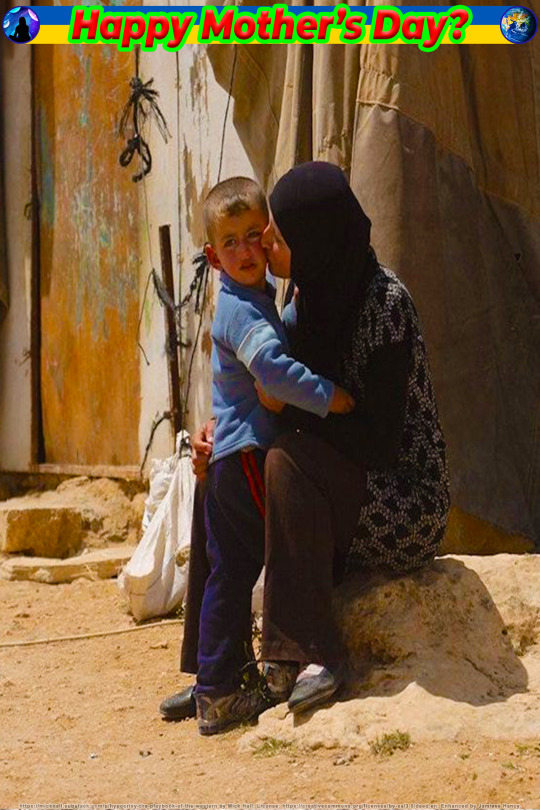
While Mother's Day is a widely celebrated holiday honoring mothers and motherhood, it's also faced criticism over the years.
Like many holidays, Mother’s Day isn’t unique in the sense that it suffers from over-commercialization to the point where much of its history has been stripped away.
Over time, the holiday has become increasingly commercialized, with businesses heavily promoting the sale of cards, flowers, gifts, and other products. This commercialization has led to backlash from many people who feel the true meaning of the holiday has been overshadowed by consumerism.
Critics argue that the pressure to buy expensive gifts and participate in elaborate celebrations takes away from the genuine appreciation and recognition of mothers – that we often end up spending more time and effort feeding money into a system that exploits our love for our mothers than actually celebrating them.
Additionally, the holiday has been criticized for excluding or marginalizing certain types of mothers, such as single mothers, adoptive mothers, lesbian and gay mothers, and those who've experienced pregnancy loss. There are also concerns that the holiday reinforces traditional gender roles and expectations involving motherhood.
In Julia Ward Howe’s 1870 Mother’s Day Proclamation, she called on women to use their positions as mothers to influence society to end all wars. She called for mothers to protest the futility of their sons killing other mothers’ sons.
And yet, 150 years on, our planet is still infected with multiple wars that continue to claim the lives of thousands of mothers’ sons and daughters. Are modern-day mothers protesting enough?
On this Mother’s Day, let’s remember that all mothers, all women, and all people have a stake in war and a responsibility to protest the incredible violence that so many victims around the world are suffering through.
Despite all of these criticisms, Mother's Day remains a significant cultural event, with millions of people around the world pausing to take the time to honor and appreciate the mothers in their lives. As the holiday continues to evolve, it will be important to find a balance between commercialization, activism, and the genuine, well-deserved celebration of motherhood.
Conclusion: Celebrating the Spirit of Motherhood

In conclusion, the history of Mother’s Day is a rich one, tracing back to ancient civilizations and evolving into a modern-day holiday that is celebrated around the world.
From the early efforts of an activist mother and her devoted activist daughter to the later support of political leaders, Mother’s Day has become a day to honor and appreciate mothers and motherly figures for the love and care they provide our families and communities. It’s a day to recognize the sacrifices that mothers make every day and to shower them with the appreciation and gratitude they deserve.
Mothers are the bedrock of our families, offering unwavering love, guidance, and support through every stage of our lives. Their selfless dedication and tireless efforts shape us into the individuals we eventually become. From the earliest moments of our existence to the milestones that define our growth, mothers are there, nurturing our dreams and championing our successes.
Motherhood is a testament to the power of the human spirit, embodying resilience, compassion, and an unbreakable bond that transcends time and distance. As we honor mothers everywhere, let’s celebrate the profound impact they have on our lives and the legacy they leave for our descendants. So, to all you mothers, thank you for always being there. Happy Mother’s Day – this day and every day! ☮️ Peace… Jamiese

📚 Text Sources:

📷 Image Sources:
1. https://www.worldhistory.org/image/6346/venus-of-hohle-fels/ by Thilo Parg; License: https://creativecommons.org/licenses/by-sa/4.0/deed.en. Enhanced by Jamiese Hancy.
https://stock.adobe.com/images/bushmen-san-rock-painting-of-antelopes-south-africa/166072665 by EcoView; License: https://stock.adobe.com/license-terms. Enhanced by Jamiese Hancy.
2. https://commons.wikimedia.org/wiki/File:John_Elliott_-_Julia_Ward_Howe_-_Google_Art_Project.jpg by John Elliott (1858 - 1925); License: source website. Enhanced by Jamiese Hancy.
3. https://placeit.net/c/mockups/stages/long-sleeve-tee-and-t-shirt-mockup-of-mother-and-daughter-making-cookies-37511-r-el2 by Placeit; License: https://placeit.net/. Enhanced by Jamiese Hancy.
https://placeit.net/c/design-templates/stages/cute-t-shirt-design-maker-for-mother-s-day-827g by Placeit; License: https://placeit.net/. Enhanced by Jamiese Hancy.
https://placeit.net/c/design-templates/stages/cool-t-shirt-design-maker-featuring-a-chameleon-illustration-1152o-6-el by Placeit; License: https://placeit.net/. Enhanced by Jamiese Hancy.
4. https://placeit.net/c/mockups/stages/long-sleeve-tee-mockup-featuring-a-family-of-two-holding-hands-at-the-park-32637 by Placeit; License: https://placeit.net/. Enhanced by Jamiese Hancy.
https://placeit.net/c/design-templates/stages/cute-t-shirt-design-maker-for-mother-s-day-827g by Placeit; License: https://placeit.net/. Enhanced by Jamiese Hancy.
https://placeit.net/c/design-templates/stages/illustrated-t-shirt-design-template-with-cute-animals-409-el1 by Placeit; License: https://placeit.net/. Enhanced by Jamiese Hancy.
5. https://c1.wallpaperflare.com/preview/43/876/978/meerkats-meerkat-baby-zoo-cute.jpg by ; License: https://www.walpaperflare.com/terms-of-use. Enhanced by Jamiese Hancy.
6. https://mickhall.substack.com/p/hypocrisy-the-playbook-of-the-western by Mick Hall; License: https://creativecommons.org/licenses/by-sa/3.0/deed.en. Enhanced by Jamiese Hancy.
7. https://placeit.net/c/mockups/stages/hoodie-mockup-of-a-mom-hugging-her-son-32660 by Placeit; License: https://placeit.net/. Enhanced by Jamiese Hancy.
https://placeit.net/c/design-templates/stages/cute-t-shirt-design-maker-for-mother-s-day-827g by Placeit; License: https://placeit.net/. Enhanced by Jamiese Hancy.
https://www.pickpik.com/meerkat-rodent-animal-wildlife-wild-zoology-155816 by PickPik; License: https://www.pickpik.com/terms-of-service. Enhanced by Jamiese Hancy.
8. https://www.pickpik.com/giraffe-animals-wildlife-africa-baby-mother-9648 by PickPik; License: https://www.pickpik.com/terms-of-service. Enhanced by Jamiese Hancy.
9. https://placeit.net/c/mockups/stages/long-sleeve-tee-mockup-featuring-a-pregnant-woman-listening-to-music-45509-r-el2 by Placeit; License: https://placeit.net/. Enhanced by Jamiese Hancy.
https://placeit.net/c/design-templates/stages/cute-t-shirt-design-maker-for-mother-s-day-827g by Placeit; License: https://placeit.net/. Enhanced by Jamiese Hancy.
10. https://pixabay.com/photos/yemen-chameleon-chameleon-3221437/ by aixklusiv; License: https://pixabay.com/service/terms/. Enhanced by Jamiese Hancy.
https://stock.adobe.com/images/green-praying-mantis/376761644 by mehmetkrc; License: https://stock.adobe.com/license-terms. Enhanced by Jamiese Hancy.
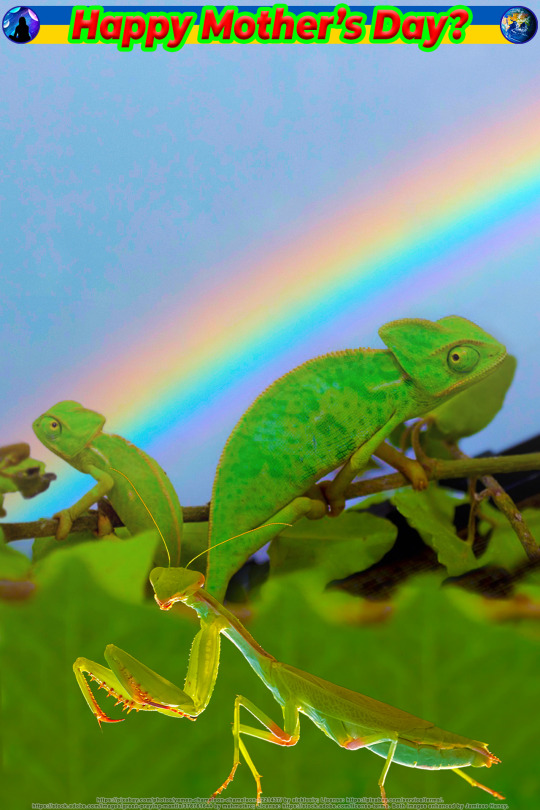
#mothers day#jamiese#nature#wildlife#animals#conservation#teepublic#africa#biodiversity#wildlife photography#mothers day 2024#mothers day gifts#mothers day flowers#what day is mothers day#mothers day card#when is mothers day 2024#gift ideas for mom#mothers#mothers day brunch#mothers day ideas#happy mothers day#mothers day gift ideas#gifts for mothers day#mexican mothers day#inspiration#mom#mum#mother#mama#motherhood
1 note
·
View note
Text
Enter Into The Digital World Of Trending Bengali TV Serials For A Binge-Worthy Experience.
Introduction:
In recent years, the entertainment industry has evolved dramatically in favor of digital platforms, altering how people consume information. Digital entertainment platforms like Dangal Play have emerged as the new frontier, providing access to Bengali TV Serial, movies, and unique content anytime and anywhere. The ability to explore a wide range of information in different languages, genres, and cultures can be accessible easily.

Overview Of Bengali TV Serials' Popularity:
Among the numerous offers on digital platforms, Bengali TV Serial have made a space for themselves, gaining tremendous popularity and recognition. Bengali TV serials have captured viewers not only in Bengal but also throughout India and beyond, thanks to its rich storyline, intriguing characters, and cultural authenticity. The success of Bengali TV serials on sites like Dangal Play is characteristic of the rising need for localized content that connects with audiences on a deeper level.
Exploring Diverse Genres:
Dangal Play provides many Bengali TV Serial in many genres, guaranteeing something for everyone. Whether your taste is romantic comedies, action-packed thrillers, touching family sagas, or mythical tales, Dangal Play's selection of popular Bengali TV serials has something for everyone.
Celebrating Cultural Heritage:
Several well-liked Bengali TV Serial are available on Dangal Play. By showcasing practices, traditions, and values deeply rooted in Bengali society, the play pays tribute to Bengal's rich cultural past. These serials offer a glimpse into Bengal's cultural tapestry, engrossing viewers with authentic storytelling and attention to detail.
Popular Bengali TV Serials On Dangal Play:
Saath Sokaler Sure: As everyone knows, listening to music can help you feel better during the day and rejuvenate your mind. Saat Sokaler sure has been carefully crafted with this in mind. The musical show features a variety of musical styles, including folk music, Rabindrasangeet, Atulprasad, Dwijendrageeti, Rajinikanth, and Najrulgeeti.
SagarJyoti: Everyone has the right to dream, even with modest means. Jyoti, the daughter of a low-income family, falls in love with Sagar, the son of an affluent family. After their marriage, Sagar's perspective changes. Sagar overcomes his past pain and begins to live a new life.
Roja: Romantic family drama is the genre of the show. Rupai, a poor boy, married Roja, a rich girl after they fell in love in college. Because of their diverse upbringing, they encounter several obstacles regarding cultural values, society, etc. Even after marriage, they will have to deal with many conflicts, which can end their relationship.
The Impact Of Dangal Play:
With the help of Dangal Play's platform, popular Bengali TV Serial have reached a worldwide audience, overcoming cultural divides and establishing a sense of community among viewers. The platform's user-friendly interface, high-quality streaming, and numerous content offers have helped to increase its appeal among Bengali TV serial fans.
Engaging The Audience:
Popular Bengali TV Serial on Dangal Play captivates viewers with gripping stories, sensitive characters, and challenging ideas. Audiences frequently lose themselves in the narratives, looking forward to each new episode and developing strong emotional bonds with the characters.
The Future Of Bengali TV Serials On Dangal Play:
Bengali entertainment fans have a bright future as Dangal Play keeps adding Bengali TV Serial to its library and adapting to changing user tastes. Thanks to its dedication to presenting top-notch Bengali storytelling and commitment to producing high-quality content, Dangal Play is still the go-to place for binge-worthy TV serial experiences online.
Conclusion:
The famous Bengali TV Serial Dangal Play provides a compelling glimpse into Bengal's storytelling legacy's cultural richness, emotional depth, and creative brilliance. Dangal Play offers a variety of Bengali TV serials that will keep you captivated and delighted, regardless of your taste in drama, romance, comedy, or mythology. Explore the world of popular Bengali TV series on Dangal Play and set out on an adventure of fantastic entertainment.
0 notes